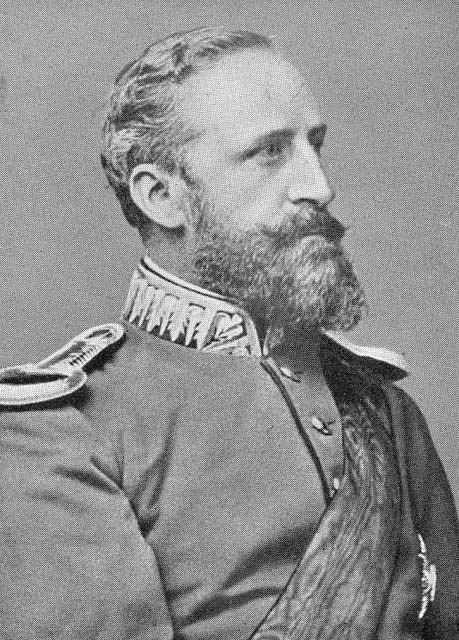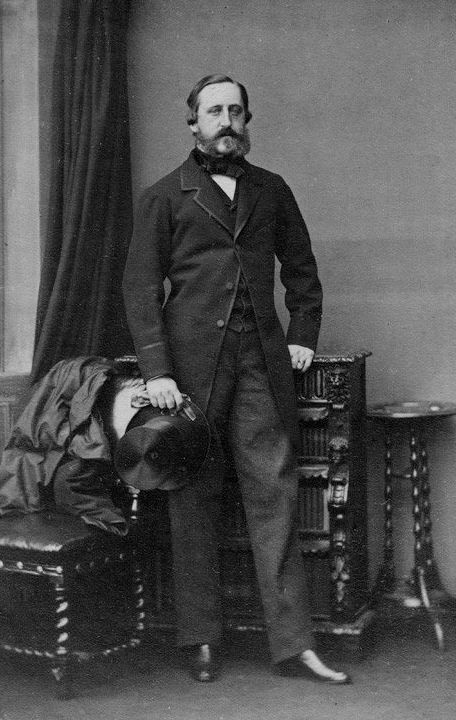by Scott Mehl © Unofficial Royalty 2018

Adelheid of Hohenlohe-Langenburg, Duchess of Schleswig-Holstein; Credit – Wikipedia
Princess Adelheid of Hohenlohe-Langenburg was the wife of Friedrich VIII, Duke of Schleswig-Holstein. She was born Princess Adelheid Victoria Amalie Louise Maria Konstanze on July 20, 1835, in Langenburg, Principality of Hohenlohe-Langenburg, now in Baden-Württemberg, Germany, the daughter of Ernst I, Prince of Hohenlohe-Langenburg and Princess Feodora of Leiningen, the elder half-sister of Queen Victoria of the United Kingdom.
Adelheid had five siblings:
- Carl Ludwig II, Prince of Hohenlohe-Langenburg (1829-1907) – married Marie Dorothea Grathwohl, had issue
- Princess Elise (1830-1850) – unmarried
- Hermann, Prince of Hohenlohe-Langenburg (1832-1913) – married Princess Leopoldine of Baden, had issue
- Prince Victor (1833-1891) – married Laura Seymour, had issue
- Princess Feodora (1839-1872) – married Georg II, Duke of Saxe-Meiningen, had issue

Adelheid with her mother Princess Feodora. source: Wikipedia
In 1852, the new French Emperor Napoléon III proposed to Adelheid, hoping that marriage to Queen Victoria’s niece would bring a closer alliance with the United Kingdom. However, Queen Victoria was horrified by the idea but remained silent. Adelheid’s family understood that Victoria’s silence indicated her disapproval and declined the Emperor’s proposal. He went on to marry Eugénie de Montijo, who would later become a close friend of Queen Victoria and her family.

Friedrich VIII, Duke of Schleswig-Holstein; Credit – Wikipedia
Four years later, in Langenburg on September 11, 1856, Adelheid married Friedrich of Schleswig-Holstein-Sonderburg-Augustenburg, the future Friedrich VIII, Duke of Schleswig-Holstein. He was the son of Christian August II, Duke of Schleswig-Holstein-Sonderburg-Augustenburg and Countess Louise Sophie of Danneskiold-Samsøe. They had seven children:
- Prince Friedrich (1857-1858) – died in infancy
- Princess Auguste Viktoria (1858-1921) – married Wilhelm II, German Emperor, had issue
- Princess Karoline Mathilde (1860-1932) – married Friedrich Ferdinand, Duke of Schleswig-Holstein-Sonderburg-Glücksburg, had issue
- Prince Gerhard (born and died1862) – died in infancy
- Ernst Günther, Duke of Schleswig-Holstein (1863-1921) – married Princess Dorothea of Saxe-Coburg and Gotha, no issue
- Princess Luise Sophie (1866-1952) – married Prince Friedrich Leopold of Prussia, had issue
- Princess Feodora Adelheid (1874-1910) – unmarried

Some of Adelheid’s children, photographed c1869. (l-r) Caroline Mathilde, Auguste Viktoria, Luise Sophie and Ernst Günter. source: Wikipedia
In November 1863, Adelheid’s husband claimed his succession to the duchies of Schleswig and Holstein, following the death of the Danish King Frederik VII, and the family moved to Kiel in the Duchy of Holstein. After the duchies of Schleswig and Holstein were annexed by Prussia following the Austro-Prussian War, Adelheid and her family returned to Dolzig, in Lower Lusatia, then part of Prussia, now in Poland, where they had resided after their marriage. They alternated between Dolzig, Gotha, Schloss Primkenau in Silesia, and Schloss Gravenstein near Sonderburg (now known as Gråsten Palace). Schloss Gravenstein had been confiscated from Friedrich’s father in 1852 due to his part in the Schleswig-Holstein War. Following Prussia’s annexation of the duchies, Schloss Gravenstein was returned to Friedrich. Today, it is a summer residence of the Danish Royal Family.
After her husband died in 1880 and the marriage of her eldest daughter in early 1881, Adelheid retired from public life, settling in Dresden, Kingdom of Saxony, now in the German state of Saxony, where she spent her time painting and enjoying the arts. She died on January 25, 1900, in Dresden, and was buried in the Ducal Graveyard in Primkenau, Kingdom of Prussia, now in Przemków, Poland.
This article is the intellectual property of Unofficial Royalty and is NOT TO BE COPIED, EDITED, OR POSTED IN ANY FORM ON ANOTHER WEBSITE under any circumstances. It is permissible to use a link that directs to Unofficial Royalty.
Schleswig-Holstein Resources at Unofficial Royalty













